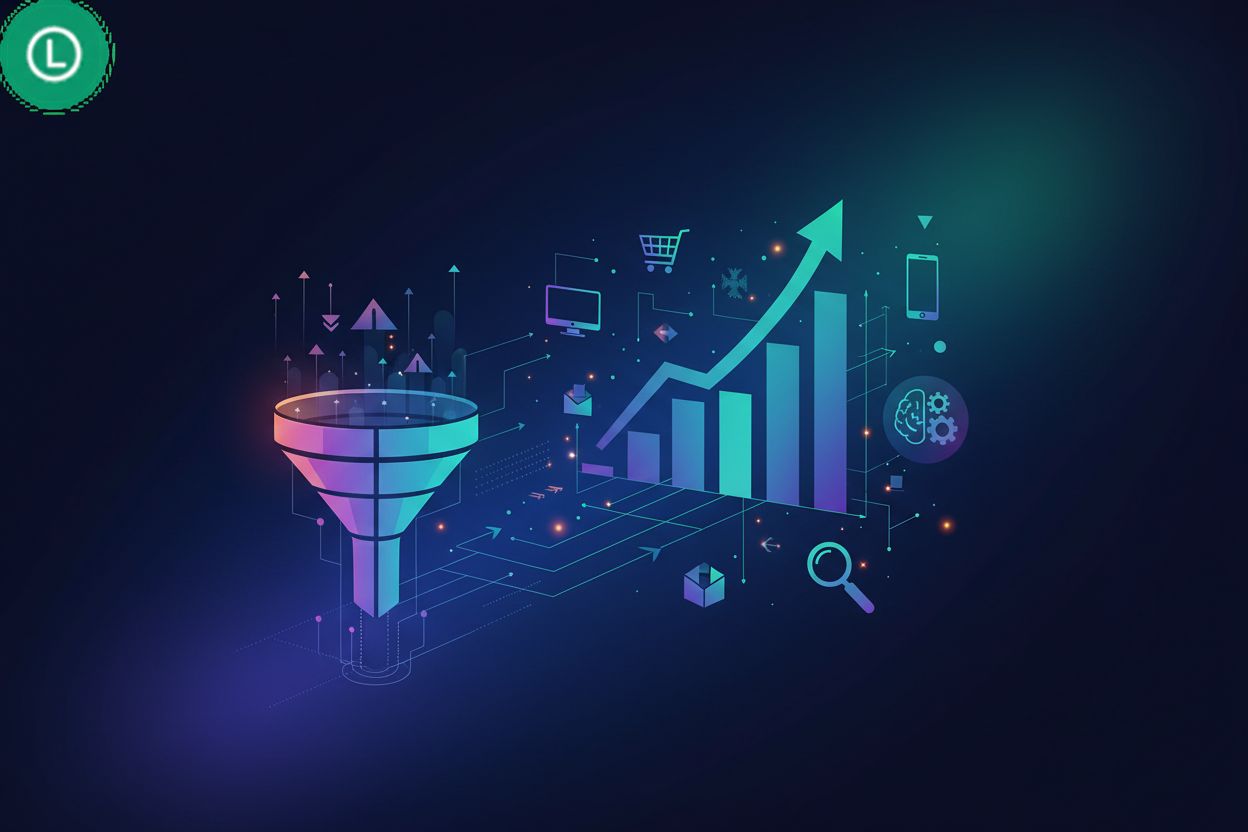Behavioral Segmentation with Machine Learning
TL;DR
Understanding Behavioral Segmentation
Behavioral segmentation? It's not just a buzzword, it's how you really get to know your customers. Forget guessing; this is about watching what they do.
- It's grouping customers by their actions, not just who they are, according to HubSpot. Like, are they heavy users, or just occasional browsers?
- Different from demographics: it's not about age or income, it's about behavior. A student and a ceo might buy the same product, but why?
- Think RFM (Recency, Frequency, Monetary) analysis: When did they last buy? How often? How much did they spend? Bounteous uses this to customize marketing on a personal level.
- This help with ROI: you're not wasting adds on cold leads
Basically, behavioral segmentation is the key to personalizing experiences and keeping customers engaged. Now, let's talk about why this matters for small business.
The Power of Machine Learning in Behavioral Segmentation
Alright, so you're thinking about leveling up your behavioral segmentation? Machine learning (ML) is where it's at. It's not just about knowing what your customers do, but why and what they'll do next.
- Automated pattern recognition? AI can sift through tons of data – think website clicks, purchase history, app usage – and spot patterns humans would totally miss. For example, in healthcare, it could identify patients at high risk based on their appointment history and medication refills.
- Predictive analytics is cool: Machine learning isn't just about past behavior. It predicts future actions. Which help retail companies forecast demand based on past shopping habits.
- Dynamic segmentation is important: Customer behavior changes fast. ML algorithms adapt segments in real-time. So, a financial service can adjust offers based on recent transaction patterns. ML achieves this dynamic segmentation by continuously processing new data. Algorithms like K-Means clustering can group customers into segments, and as new data comes in, these clusters can be recalculated, or new data points can be assigned to existing clusters. Similarly, classification models can be trained to predict which segment a customer belongs to, and these models can be retrained or updated as customer behavior evolves.
As abmatic.ai says, AI provides more accurate insights into customer behavior.
Benefits of Machine Learning in Behavioral Segmentation
So, why go through all the trouble of using ML for behavioral segmentation? The payoff is pretty sweet.
- Hyper-personalization: ML lets you get super specific. Like, tailoring messages not just to broad segments, but to what each individual person likes. This means personalized offers for everyone, not just generic emails. Think recommendation engines and deep learning models that can build detailed individual user profiles.
- Improved Customer Retention: By understanding customer behavior deeply and predicting churn, you can proactively engage at-risk customers with targeted offers or support, keeping them around longer.
- Increased Marketing ROI: When you know exactly who to target and what message will resonate, your marketing spend becomes way more efficient. No more shouting into the void!
- Enhanced Customer Experience: Personalized interactions and relevant offers make customers feel understood and valued, leading to a better overall experience.
- Deeper Insights: ML can uncover subtle patterns and correlations in customer data that humans might miss, leading to a richer understanding of your audience.
Implementing Machine Learning for Behavioral Segmentation: A Step-by-Step Guide
Ready to put machine learning into action for behavioral segmentation? Let's dive into the how-to.
First, nail down what you want to achieve. Is it boosting engagement, sales, or keeping customers around longer? What questions are you trying to answer about your customers?
Next up, you need data, and lots of it. Think website activity, purchase history, maybe even social media stuff.
- Clean it up, too! Messy data leads to bad insights.
- Make sure you have enough data, and that it's actually useful for your goals. You don't want to waste time on misleading information.
Selecting the right machine learning tool is key. Tools like Google Analytics can provide raw data and some initial insights, while libraries like scikit-learn offer powerful algorithms for building custom ML models. The distinction is that Google Analytics is a platform for data collection and analysis, whereas scikit-learn is a software library that provides the building blocks for ML tasks.
- Pick tools that play nice with what you’re already using.
- Weigh free vs. paid options carefully to find what fits your budget and needs.
Now for the fun part: building your models. This is where you get to tailor the models to your segmentation needs. For example, K-Means clustering is a popular algorithm for grouping customers into distinct segments based on their behaviors. You'd train these models with your cleaned-up data to spot those valuable patterns.
Feature Engineering is a crucial step here. It involves transforming raw data into features that better represent the underlying problem to the predictive models. For behavioral segmentation, this could mean creating new variables from raw data, such as calculating the average time spent on a product page, the number of abandoned carts in the last month, or the ratio of positive to negative reviews.
Don't forget to keep tweaking your models as you get more data. It's an ongoing process.
Now, let's talk about analyzing those insights and putting them to work.
Real-World Examples and Use Cases
Wanna see behavioral segmentation in action? It's not just theory, folks.
- E-commerce sites use your purchase history, to give you, those "you might also like" deals.
- Content marketers tailor content to your reading habits. beginners get beginner guides, and pros get pro tips.
- Email marketers? They segment based on, how often you open their emails.
These examples show how understanding customer actions leads to more effective marketing and better customer experiences.
Ethical Considerations and Best Practices
Is using AI in your business ethical? It's not always a black-and-white question. You've got to think about the impact of your decisions on your customers.
Make sure you're following regulations like GDPR and CCPA. It's all about protecting customer data and respecting their rights.
Be upfront about what data you're collecting and how you're using it. Transparency is key to building trust.
Always, always respect customer privacy. It's not just a legal requirement; it's the right thing to do.
Mitigating Bias and Ensuring Fairness: AI models can inadvertently perpetuate biases present in historical data. For instance, a model trained on past purchasing data might unfairly favor certain demographics if those groups historically spent more, leading to them receiving better offers. To combat this, it's essential to audit AI models for unfair biases and to use diverse datasets to train your models. This helps ensure that the models are fair across all customer segments and that AI enhances, rather than discriminates.
Use AI responsibly and ethically, always.
Enhance the customer experience, don't undermine it. AI should make things better, not worse.
Be honest and upfront about how you're using AI. Customers appreciate honesty.
It's all about being responsible and building trust.
Future Trends in Behavioral Segmentation and Machine Learning
Okay, so what's next for behavioral segmentation? It's not staying still, that's for sure. AI and machine learning are gonna keep shaking things up, and honestly, it's kinda exciting.
AI is gonna let you get super specific. Like, tailoring messages not just to segments, but to what each person likes.
Forget generic emails; future is personalized offers for everyone.
Imagine, a healthcare provider sends custom wellness tips based on your activity tracker data. This level of hyper-personalization is enabled by advanced ML techniques like recommendation engines and deep learning models that can create highly detailed individual user profiles.
Expect more data from connected devices, like smartwatches and thermostats.
This means a deeper understanding of habits, like when you usually work out, or what temperature you like, according to abmatic.ai.
A financial service could offer tailored investment advice based on your spending habits tracked via your smart devices.
AI will help you map customer journeys way better.
Identifying key touchpoints and optimizing the experience is everything.
Retailers could use AI to predict when customers are most likely to abandon their online shopping carts, then send targeted promotions to encourage them to complete their purchase.
Basically, the future is about getting closer and being more relevant.



